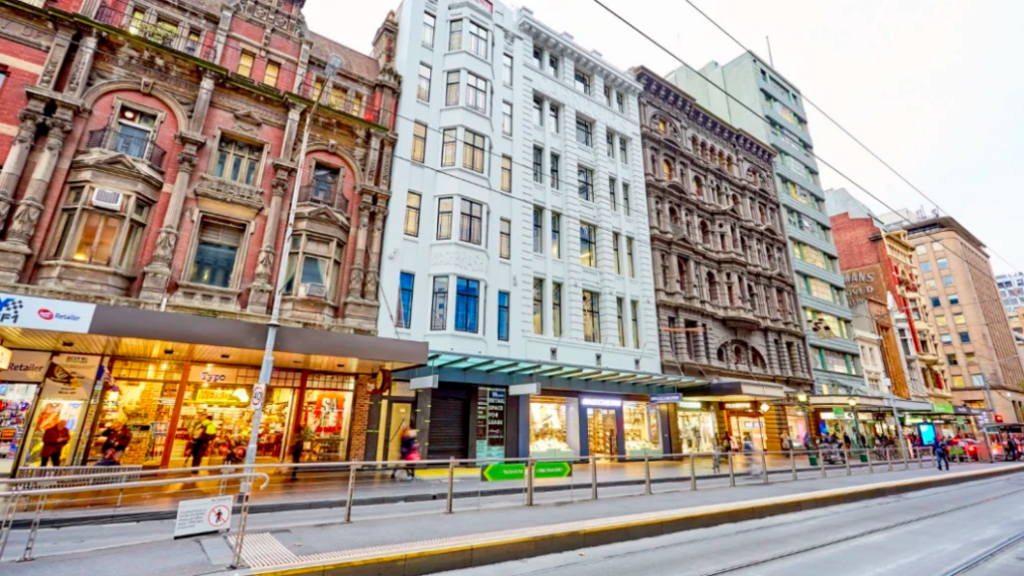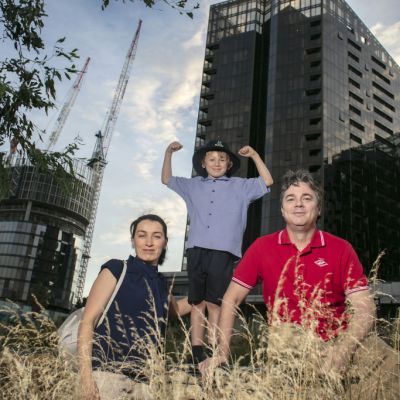High-density living should not be feared, despite the spread of coronavirus

Living in high-density cities gives people better overall health outcomes and should not be feared, experts say, despite the potential for hastening the spread of infectious diseases like COVID-19.
The high concentration of homes in places that have seen a rapid spread of the virus, including New York City and cities in northern Italy, was incorrectly blamed for the lack of containment, co-founder of planning firm Roberts Day Mike Day said.
“The problem is governance,” Mr Day said. “I think we need to be very careful about saying ‘we can’t create dense places any more’. The advantage of more dense neighbourhoods is that they are more walkable and they’re more inviting – all your necessities are in walking distance.”
Monash University professor of medicine Paul Komesaroff said while more densely populated areas did have a greater risk for spreading the disease, these areas also had better access to healthcare.
He said if people followed social distancing measures, and if common areas in large apartment buildings were thoroughly cleaned, managing the spread of the disease became easier.
“The social isolation and distancing practices are meant specifically to cut those bonds and to break the transmission process,” Professor Komesaroff said.
He said in the case of Italy, culture played a larger part in the spread of the virus than high-density living.
“That includes being in close physical contact when they greet, but also extended families meeting for dinner and grandparents looking after grandchildren and so on. The contact really relates to deep features of the culture, not just whether people are in the same high-rise building,” he said.
Two of the world’s most densely populated cities were those that managed to contain the spread of the virus very successfully, managing director of EG Urban Planning Shane Geha said.
“Hong Kong and Singapore have densities that are orders of magnitude greater than Sydney – which is 407 people per square kilometre – these are cities in the [3000] and 4000 people per square kilometre depending on how you measure the metropolitan area,” Dr Geha said.
He said Australia’s low density was a problem, particularly for those in the outer suburbs of our biggest cities, Sydney and Melbourne, who faced long commute times and lack of access to public transport.
“Public transport cannot work without density. The low-density city models also have a terrible effect on pollution, on sprawl, on car dependency.”
He said there was a danger that people would start to fear living in medium to high-density neighbourhoods, which could have dire consequences for how Australia’s cities grow in future.
“Cities are essential to the functioning of society, and dense cities are the most functional, active, vibrant and successful forms of human agglomeration.”
Dense cities also provided more opportunities for people to walk and cycle daily, and therefore gave them better overall health outcomes, RMIT University distinguished professor and planning expert Billie Giles-Corti said.
She said while the rapid spread and subsequent deaths from COVID-19 were terrible and shocking, millions of people died each year from chronic diseases such as heart disease and type two diabetes.
“Globally there are 15.2 million deaths due to heart disease and stroke, there are 1.6 million people a year who die from diabetes two. These are massive numbers, and that is partly because of the risk factors for those diseases and a big part of that is being physically inactive,” Professor Giles-Cortis said.
“The way we design our cities makes a huge difference, so a denser city means that we do have all the benefits of density – access to public transport, the potential for more affordable housing, people can walk and cycle to local shops.”
She said the concern people had about high-density cities fostering the spread of disease was more about overcrowding, which was often seen in inner-city areas with high student populations.
“When you’ve got affordability issues that’s when you get overcrowding,” she said. “If we’re going to take lots of [international] students, we should ensure they have affordable accommodation.”
She said if it was done correctly, density was a positive for cities not only from a health perspective but from an environmental one, and made for more resilient cities.
“I don’t think we should throw the baby out with the bathwater thinking, ‘oh a dense city means that we’re going to have more disease’ – that is completely not true. It’s about the strategies we put in place to control the virus – social distancing, stay at home, these sorts of things,” she said.
We recommend
States
Capital Cities
Capital Cities - Rentals
Popular Areas
Allhomes
More










